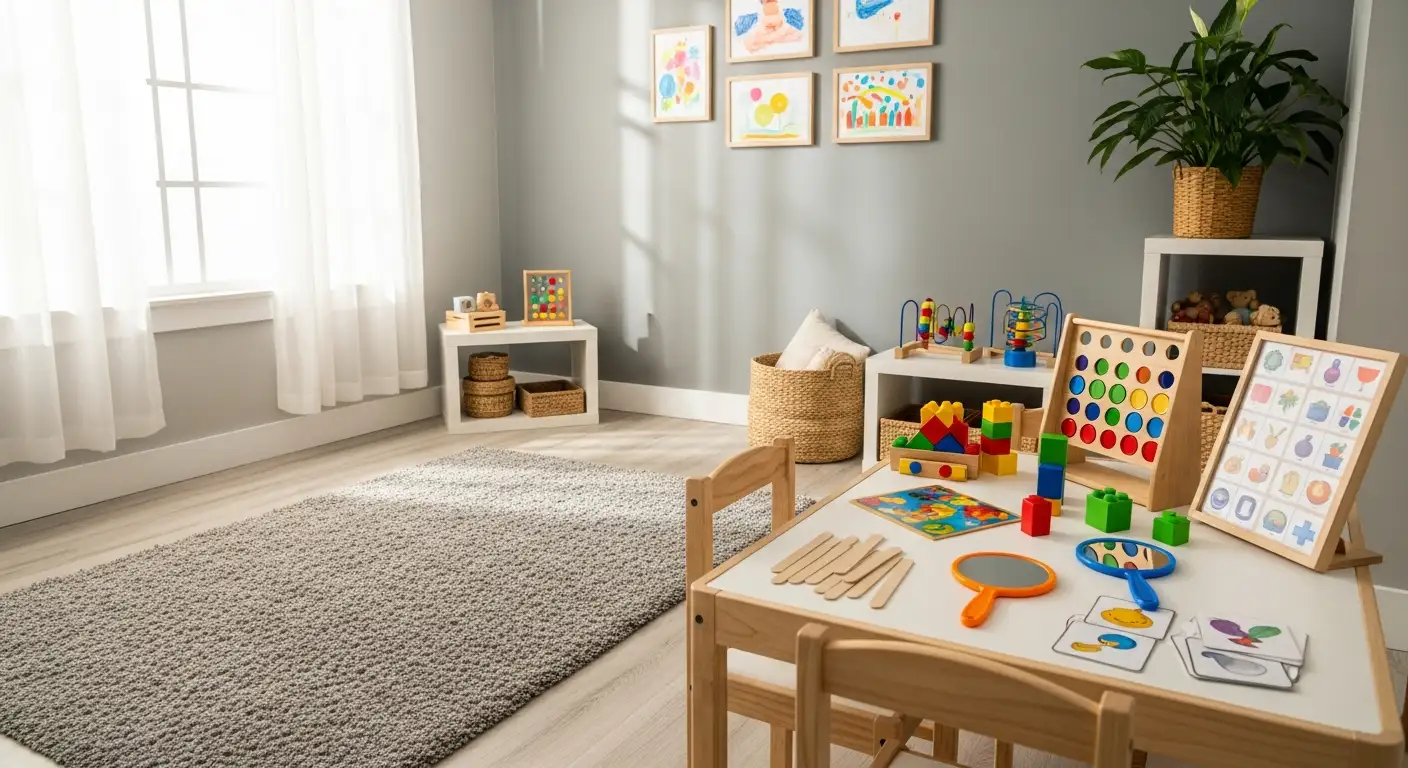Understanding the Critical Role of Peer Dynamics in Autism Intervention
Autism Spectrum Disorder (ASD) is a complex neurodevelopmental condition characterized by challenges in perception, interaction, and communication. Given its prevalence—affecting 1 in 54 children in the US—fostering effective social skills is paramount. Applied Behavior Analysis (ABA) therapy, a widely used intervention, emphasizes structured, individualized strategies to develop social competence. Central to this process is peer interaction, which serves as a foundation for promoting social, emotional, and communicative growth in children with ASD.
Significance of Peer Interaction in ABA Therapy
What is the significance of peer interaction in ABA therapy for children with autism spectrum disorder?
Peer interaction plays a vital role in ABA (Applied Behavior Analysis) therapy aimed at children with autism spectrum disorder (ASD). It creates valuable opportunities for children to practice and develop essential social skills within both structured and natural environments. This interaction helps foster social integration, improve communication, and build meaningful relationships.
In ABA therapy, techniques like breaking social behaviors into manageable steps, positive reinforcement, modeling, and role-playing are used to teach children how to initiate conversations, share interests, take turns, and understand social cues. Group therapy sessions and peer-mediated interventions encourage spontaneous social exchanges, reducing anxiety and increasing motivation for interaction.
Collaborating with peers and educators ensures that social skills are practiced across various settings, promoting their consistency and durability. This broader application of learned behaviors helps children generalize skills outside therapy, making social participation more natural and less stressful.
Peers not only serve as models but also as active supporters in the social development process. Their involvement can lead to increased feelings of acceptance and belonging for children with ASD. Overall, peer interaction within ABA therapy significantly enhances a child's ability to connect with others, communicate effectively, and participate confidently in social environments, laying the foundation for lasting friendships and community involvement.
Developing Social and Communication Skills through Peer Interaction
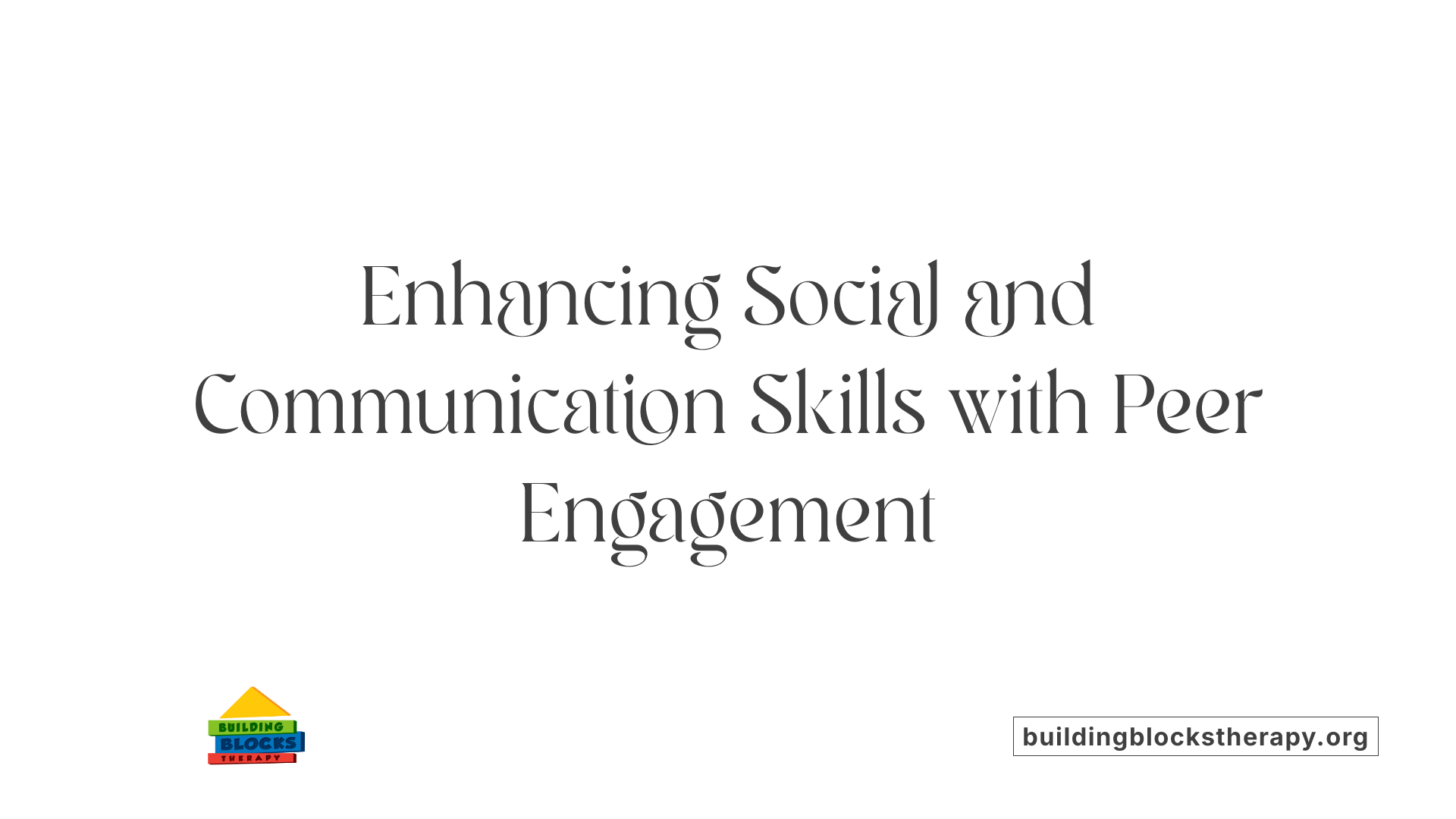
How does peer interaction contribute to developing social and communication skills in individuals with ASD?
Peer interaction is fundamental for helping individuals with autism spectrum disorder (ASD) improve their social and communication abilities. When children with ASD engage with their peers, they gain real-life opportunities to practice essential social exchanges such as initiating conversations, responding appropriately, and maintaining interactions.
Structured programs like social skills groups and buddy systems provide targeted teaching moments. These interventions focus on learning behaviors such as sharing, turn-taking, and interpreting social cues like body language and tone of voice. As children observe and imitate peers, their responsiveness increases, leading to greater engagement in social settings.
Using peers as models and rewarding positive behaviors help children with ASD generalize their newly learned skills to other environments. These interactions bolster confidence and foster more meaningful social participation.
Beyond skill acquisition, peer interactions promote inclusion by breaking down social barriers and reducing stigma. They enable children with ASD to build friendships, which are crucial for emotional development and social competence. Evidence from schools shows that peer-mediated interventions are not only effective but also sustainable, encouraging ongoing social development and better integration within peer groups.
Impact of Peer Play on Social and Emotional Development
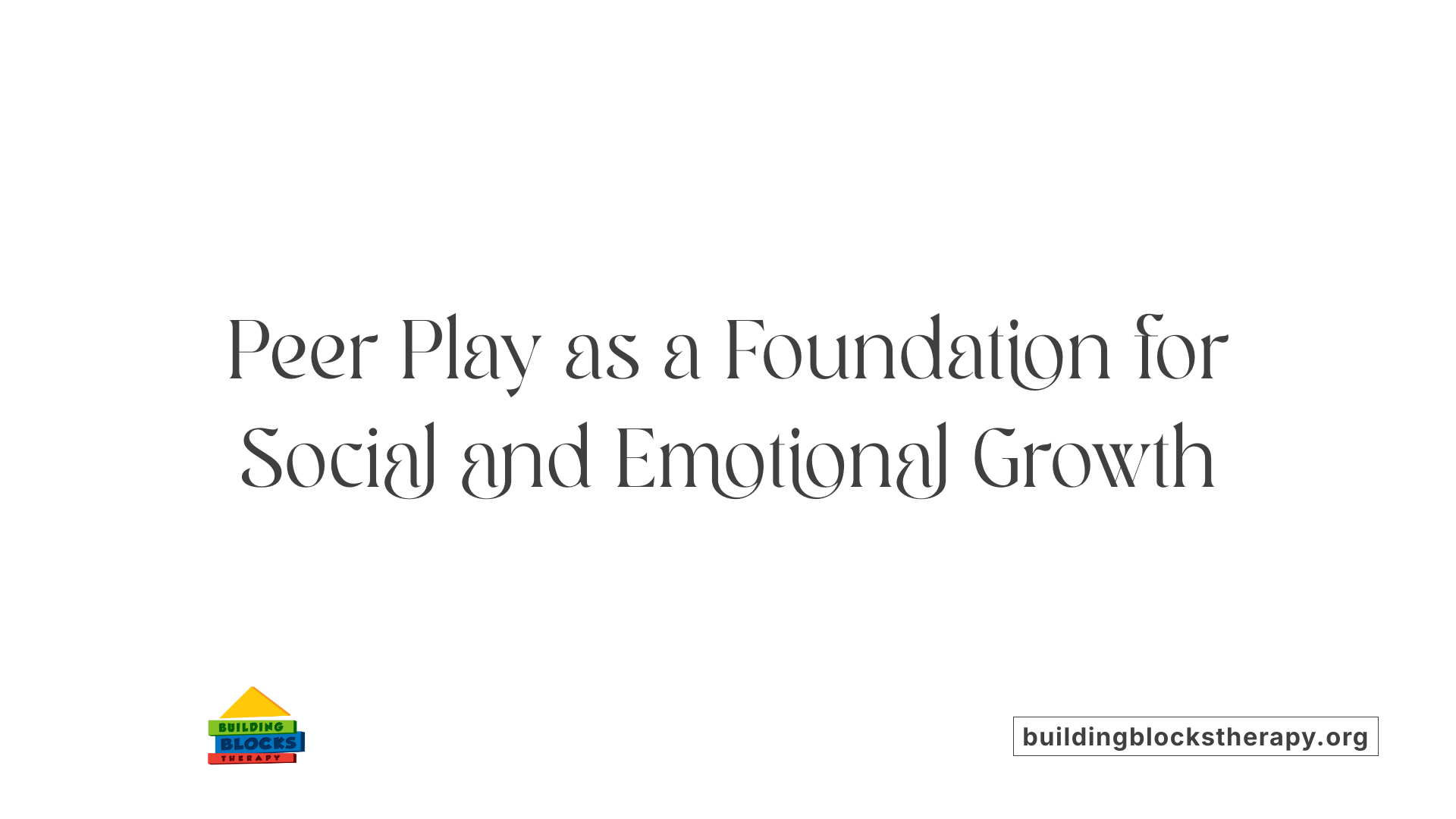
How peer play promotes cooperation, sharing, empathy, and understanding of emotional cues.
Peer play serves as a vital activity that fosters essential social skills among children, especially those on the autism spectrum. During play, children learn to cooperate by working together toward common goals, sharing toys, and taking turns. These activities promote patience, fairness, and mutual respect.
Empathy develops as children observe and respond to peers' emotional expressions, such as smiles, frowns, or body language. For children with autism, engaging in peer play helps them recognize and interpret emotional cues more accurately, which is key for developing emotional intelligence.
Activities like role-playing and group games provide natural contexts where children practice understanding how others feel and responding appropriately. Through repeated interactions, children learn to manage their own emotions and develop a sense of social connectedness.
Research evidence linking peer play ability with mental health outcomes and emotional regulation.
Research shows that children who actively participate in peer play tend to have better mental health outcomes. Early peer play ability is associated with lower risks of internalizing problems, such as anxiety and depression, as well as externalizing issues like aggression or hyperactivity.
Studies suggest that children proficient in peer interactions display improved emotional regulation. They are more capable of managing frustration, calming themselves during stressful situations, and resolving conflicts constructively.
Furthermore, engaging in peer play has been linked to the development of social cognition skills, including theory of mind—or understanding others' perspectives—and emotion recognition. These skills are foundational for emotional regulation and social competence.
School-based social-emotional programs that emphasize peer connectedness have demonstrated positive effects on emotional well-being. By promoting inclusive play and social skills, these initiatives help children develop secure peer relationships that support mental health during critical developmental stages.
How does peer play influence overall social and emotional growth?
Peer play directly impacts a child's ability to form and sustain friendships, which are critical for emotional security. When children learn to collaborate, share, and empathize through play, they build confidence and social competence.
For children with autism, structured peer interactions can significantly reduce social anxiety, increase engagement, and improve behaviors necessary for successful social functioning.
Ongoing research continues to explore how enhancing peer play can be a strategic intervention for improving emotional resilience and social adaptability, ultimately leading to healthier developmental trajectories.
Fostering Social Relationships and Inclusion through Peer Interaction

How do peer interactions promote the development of friendships, acceptance, and social inclusion?
Peer interactions are vital in helping children with autism develop meaningful friendships, gain acceptance, and become socially included. Engaging with peers allows children with ASD to learn social cues, practice communication skills, and understand social norms in a real-world context. Structured activities like group play, shared projects, and collaborative games create natural opportunities for children to connect, share interests, and build relationships.
When children with autism form friendships, they experience increased feelings of belonging and support. These relationships can improve self-esteem, motivation, and overall social well-being. Peer interactions also help reduce feelings of loneliness and social isolation, which are common among children with ASD.
The development of friendships through peer engagement encourages mutual understanding and respect. Children learn to appreciate differences, which fosters empathy and social acceptance. Over time, these interactions support the growth of social networks that extend beyond the classroom or immediate community.
Why is peer interaction important for fostering social relationships and inclusion in children with ASD?
Peer interaction plays a crucial role in promoting social relationships and inclusion. It offers children with autism opportunities to observe, imitate, and refine social behaviors in a supportive setting. These interactions provide real-life practice for skills such as initiating conversations, sharing interests, understanding social cues, and responding emotionally.
Peer-mediated interventions specifically train typically developing peers to engage with children with ASD in positive ways. These peers serve as role models and facilitators, helping children with autism navigate social situations more effectively. Research indicates that children with ASD who participate in peer-mediated programs are more likely to initiate interactions, receive more friendship nominations, and report higher friendship quality.
Furthermore, inclusive settings where children with autism are integrated with their neurotypical peers foster a sense of community and mutual respect. This creates an environment where all children feel valued and accepted, reducing stigmatization and promoting a culture of inclusion.
The positive effects extend beyond immediate social skills, contributing to long-term social competence, self-confidence, and integration into broader social environments. Overall, peer interaction is a foundational element in helping children with ASD build social ties that are essential for their personal development and societal participation.
| Aspect | Impact | Description |
|---|---|---|
| Friendship Development | Increased | Opportunities to form and sustain friendships through shared activities and mutual understanding. |
| Social Acceptance | Enhanced | Peers learn to value diversity and include children with ASD in social groups. |
| Social Skills | Improved | Practice in real-life situations, like initiating contact, sharing, and interpreting social cues. |
| Emotional Well-being | Boosted | Feeling accepted and supported reduces anxiety and promotes self-esteem. |
| Long-term Inclusion | Supported | Building connections now fosters ongoing participation in social and community activities. |
Achieving successful social inclusion hinges on structured and natural peer interactions, which nurture friendships, acceptance, and a sense of belonging. Considering that children with ASD benefit significantly from these interactions, promoting inclusive environments and training peers to facilitate social engagement are vital strategies for fostering long-term social development.
Strategies for Incorporating Peer Interaction into ABA Therapy
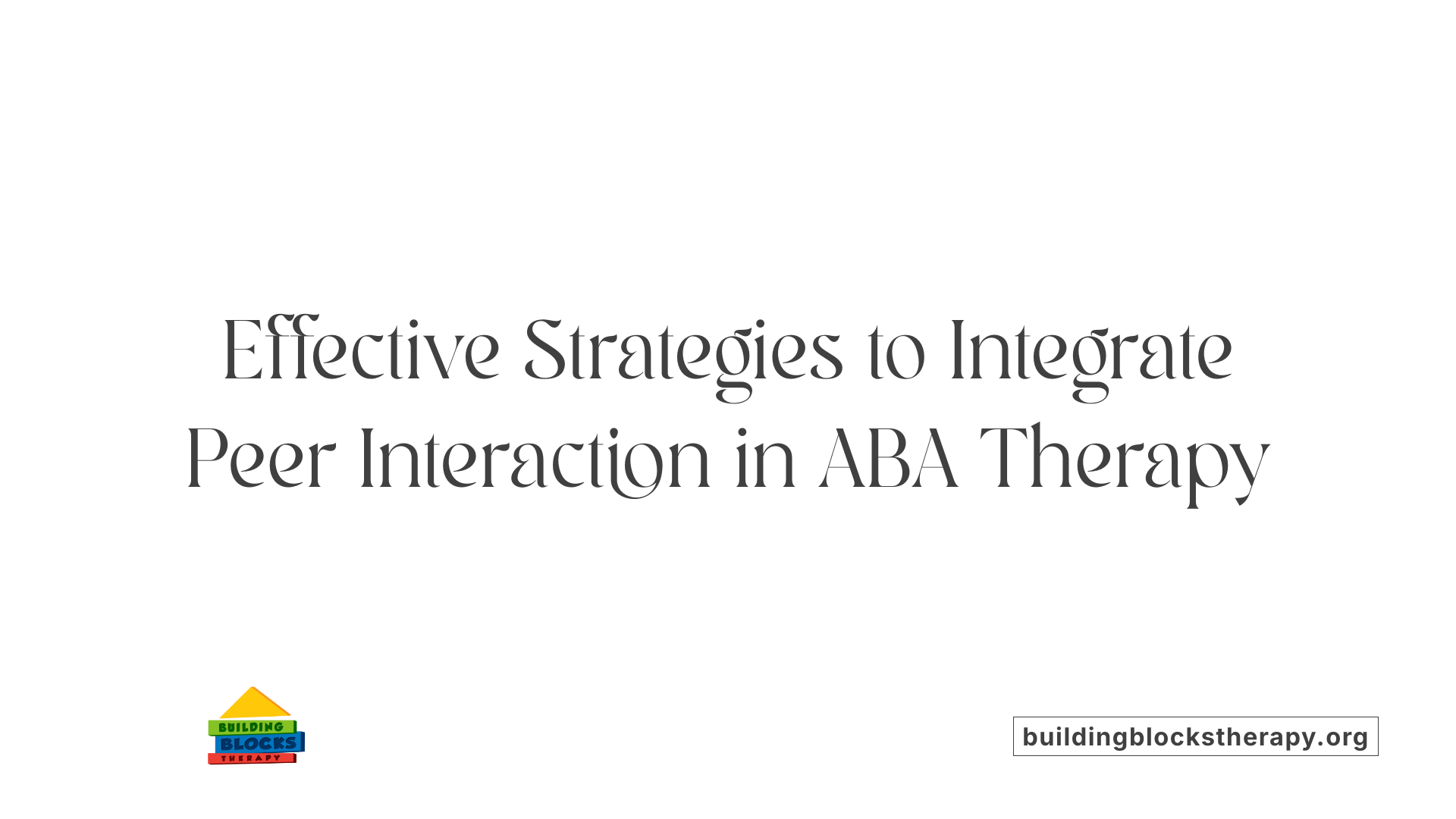
What strategies can be used to incorporate peer interaction into ABA therapy?
Integrating peer interaction into ABA therapy involves a variety of approaches that promote social engagement and communication among children with autism and their peers.
One effective method is structured peer-mediated activities. These involve selecting typical peers who are socially competent and engaging them in activities like role-playing, collaborative games, or social skills groups. These sessions are designed to teach and reinforce specific social behaviors such as sharing, turn-taking, and initiating conversations.
Naturalistic teaching is another vital strategy. During everyday activities—whether in the classroom or community—therapists and parents can use peer modeling and positive reinforcement to encourage children with autism to imitate socially appropriate behaviors. Reinforcement—offering praise or tangible rewards—not only motivates participation but also increases the likelihood that learned skills will be retained and generalized to different settings.
Visual supports, including social stories and visual schedules, help children understand expected behaviors and social cues. Social stories are personalized narratives that depict common social situations and appropriate responses, making abstract concepts more concrete and accessible.
In addition, role-playing scenarios allow children to practice social interactions in a controlled environment where they can receive immediate feedback and guidance.
Group activities such as cooperative games or art projects further promote joint attention and interactive communication. These activities encourage children to work together, share ideas, and develop friendships.
Promoting interactions in natural settings, like parks or grocery stores, helps children apply their social skills in real-life contexts. This generalization is crucial for meaningful social inclusion.
Parental involvement also plays a vital role. Training parents to use strategies like scaffolding and prompts allows for consistent reinforcement outside of therapy sessions, reinforcing skills across different environments.
Techniques such as social supports—using visual cues or scripts—and scaffolding help manage social situations by gradually decreasing support as competence develops.
Egalitarian interactions, where peers treat each other as equals, promote mutual respect and help children with autism feel included.
Overall, combining structured activities with naturalistic teaching strategies, visual supports, and family involvement creates a comprehensive approach that fosters peer engagement and social skill development in children with autism.
Evidence Supporting the Benefits of Peer Interaction in ABA
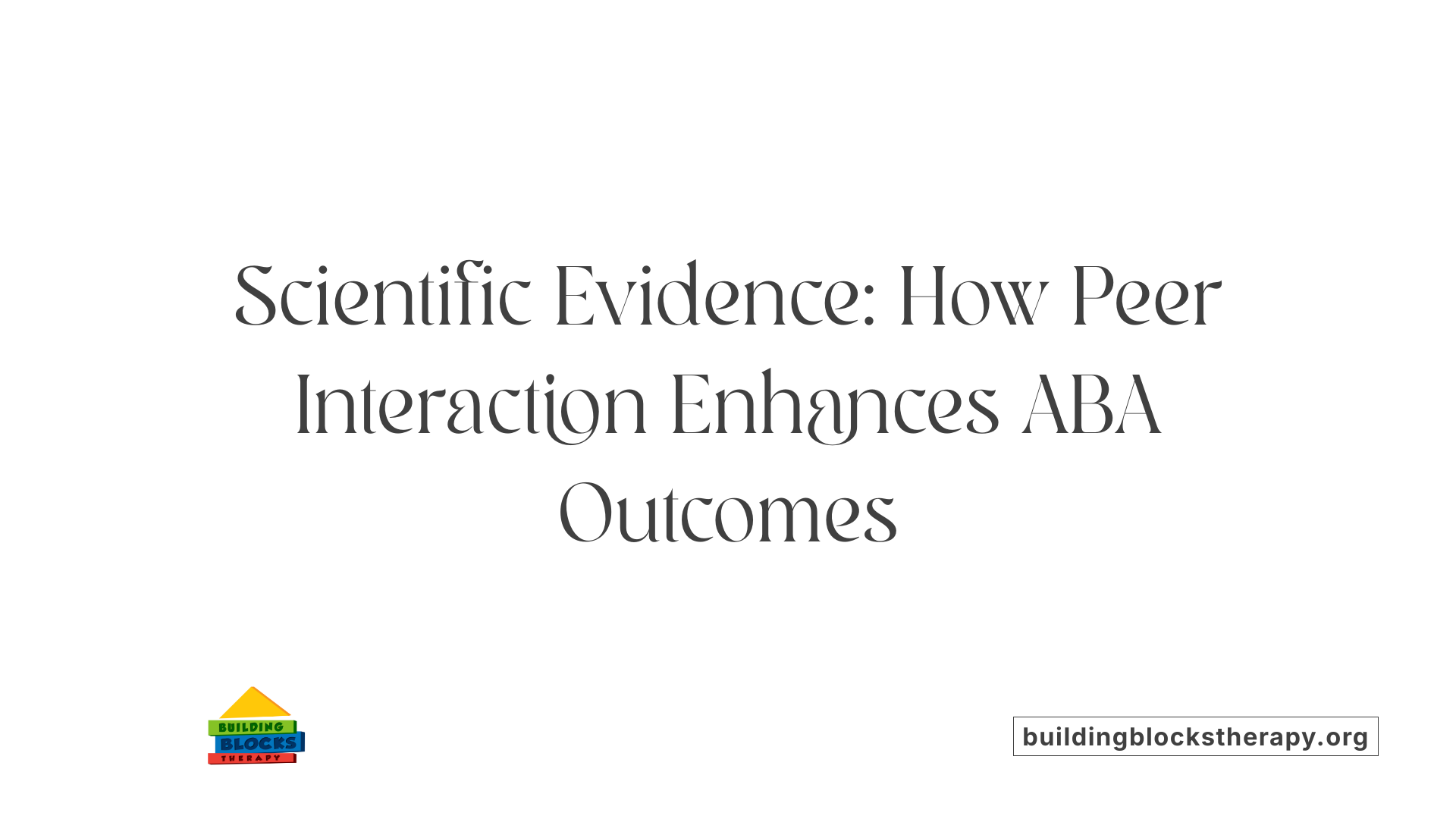
What evidence supports the benefits of peer interaction in ABA therapy?
Research has established strong support for the positive impact of peer interaction within Applied Behavior Analysis (ABA) therapy for children with autism. Several studies have shown that when social supports are integrated into therapy, children demonstrate an increased frequency of social behaviors, such as initiating conversations and responding to peers. For instance, experimental studies employing single-case designs have demonstrated a clear relationship between targeted social interventions and enhanced peer communication. These studies indicate that social supports can almost double the social initiations made by children with autism, leading to more reciprocal and multimodal interactions.
Peer-mediated interventions (PMIs) are a prominent model within this approach. They involve training typically developing peers to engage with children with autism in natural settings, promoting social initiation and responsiveness. Research shows that PMIs can effectively increase social initiations, peer responses, and friendship development, making them a validated and evidence-based strategy in ABA practice. Multiple studies have confirmed that children who participate in peer-mediated activities exhibit better social skills, more stable peer relationships, and even higher levels of social confidence.
Early intervention with ABA also emphasizes fostering key social skills such as sharing, understanding social cues, and emotional awareness. These skills are crucial for long-term social integration and are supported by systematic teaching methods like modeling, reinforcement, and peer interactions. As a result, children in such programs tend to develop more meaningful social connections and exhibit improvements in both communication and social reciprocity.
The overall body of research underscores that peer interactions, especially when supported by structured strategies, lead to tangible improvements in social engagement. They create more egalitarian and diverse communication experiences, thereby reducing social isolation and enhancing social competence. Consequently, integrating peer support into ABA therapy not only accelerates skill acquisition but also enables children with autism to participate more fully and confidently in everyday social environments.
Facilitating Peer Interaction in ABA Therapy
How does ABA therapy facilitate peer interaction to improve social skills and communication?
ABA therapy plays a pivotal role in enhancing social skills among children with autism by fostering meaningful peer interactions. It does so through structured group activities that replicate natural social environments. These activities include role-playing scenarios, collaborative games, and social stories that teach children how to share interests, take turns, and understand social cues.
One of the primary methods used is peer modeling, where typically developing children or peers who demonstrate strong social skills serve as models for children with autism. This exposes the child to appropriate social behaviors and enables them to imitate these behaviors in a supportive setting.
In addition, ABA employs visual supports such as social narratives and video modeling to teach understanding of social norms and pragmatic language. These tools help children grasp the nuances of communication, including body language, tone of voice, and facial expressions.
Incorporating incidental teaching—learning opportunities that arise naturally during activities—bridges classroom skills to real-life interactions. Family involvement extends these lessons outside of therapy sessions, reinforcing learned skills during social outings and at home.
Therapists also use reinforcement techniques like praise, tokens, or tangible rewards to motivate children to practice social skills, making the learning process engaging and positive.
Ultimately, ABA therapy aims to boost confidence and resilience in social settings, enabling children to form lasting peer relationships. It promotes a sense of belonging and helps children navigate complex social landscapes more independently.
This comprehensive approach creates an environment where children feel supported and capable of engaging with peers, which is crucial for their overall social development.
Educational and Awareness Aspects of Peer Interaction in ABA Outcomes
What are the educational and awareness aspects of peer interaction's role in ABA therapy outcomes?
Raising awareness about the importance of peer interaction is crucial in optimizing ABA therapy results for children with autism. Training therapists, teachers, parents, and peers helps them understand how social interactions can be shaped and reinforced to promote meaningful developmental gains.
Educators and therapists often utilize structured strategies such as peer-mediated interventions, role-playing, and naturalistic teaching. These methods foster engaging opportunities for children with autism to practice key social skills, including sharing, turn-taking, and initiating conversations.
Peer modeling and reinforcement are central to these efforts. When typically developing peers serve as models, children with autism can observe, imitate, and internalize appropriate social behaviors. Reinforcing these behaviors immediately encourages continued use and helps them become habitual.
Efforts to increase awareness extend beyond direct training. It involves promoting an understanding of how social skills learned in therapy can be generalized across different settings. For example, structured peer play activities—like group games, art projects, or outdoor activities—are designed to motivate children and facilitate spontaneous, real-world social interactions.
Education about the benefits of peer participation emphasizes that such activities can significantly improve communication skills, emotional understanding, and relationship building. Recognizing that social skills are transferable encourages all stakeholders to create inclusive environments where children with autism feel safe, motivated, and supported.
Ultimately, fostering awareness of effective peer interaction strategies supports the development of social competence. It helps children with autism integrate better into social settings, improving their overall quality of life and fostering long-term friendships. Promoting understanding and proactive engagement ensures that social skill development continues beyond clinical sessions, leading to greater social inclusion and acceptance.
Building Foundations for a Socially Integrated Future
Peer interaction is a vital component of ABA therapy for children with autism, serving not only to improve immediate social skills but also to lay the groundwork for meaningful relationships and societal inclusion. The strategic use of peer-mediated activities, naturalistic teaching, and evidence-based interventions enhances communication, emotional understanding, and social competence. Education and awareness among therapists, educators, and parents further support the integration of these strategies into everyday settings. As research continues to demonstrate the profound benefits of peer interaction, it becomes clear that fostering social connections is essential for empowering children with ASD to participate confidently and inclusively in their communities, leading to more fulfilling and connected lives.
References
- Autism to Peers: Educating Friends and Classmates | ABA Therapy
- ABA Therapy's Impact on Social Skills
- Peer Play in Cleveland ABA Therapy
- Exploring the Social Impact of Being a Typical Peer Model for ...
- How ABA Therapy Helps With Social Skills
- How ABA Therapy Helps Improve Social Skills in Children
- ABA Therapy's Impact on Peer Interaction and Communication






